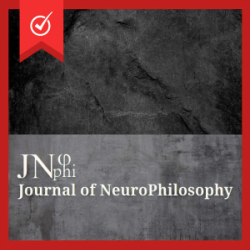Acting on What You are Perceiving: The Two-Visual-Systems Hypothesis Revisited
Two-Visual-Systems Hypothesis Revisited
Abstract
The two-visual-systems hypothesis proposed by Goodale and Milner is a radical one. If it were to be true, then our common sense such as we are acting on what we are perceiving should be completely abandoned. In this paper, I argue that the hypothesis over-generalizes what happens in simple tasks to what happens in complex tasks. By contrast, I demonstrate that what happens in complex tasks is compatible with our common sense. In a word, though what we are acting on may come apart from what we are perceiving in some cases, that is not the whole story.
Downloads
Metrics
References
Aglioti S, DeSouza JF & Goodale MA. Size Contrast Illusions Deceive the Eye but Not the Hand. Curr. Biol 1995; 5(6): 679-685.
Andersen RA, Andersen KN, Hwang EJ & Hauschild M. Optic Ataxia: From Balint’s Syndrome to the Parietal Reach Region. Neuron 2014; 81(5): 967-983.
Biegstraaten M, de Grave DD, Brenner E & Smeets JB. Grasping the Müller-Lyer illusion: Not a Change in Perceived Length. Experimental Brain Research 2007; 176: 497-503.
Briscoe R & Schwenkler J. Conscious Vision in Action. Cognitive Science 2015; 39(7): 1435-1467.
Cañal-Bruland R, Voorwald F, Wielaard K & van der Kamp J. Dissociations Between Vision for Perception and Vision for Action Depend on the Relative Availability of Egocentric and Allocentric Information. Attention, Perception, & Psychophysics 2013; 75(6): 1206-1214.
Downloads
Published
How to Cite
Issue
Section
Categories
License
Copyright (c) 2024 Bin

This work is licensed under a Creative Commons Attribution-NonCommercial-ShareAlike 4.0 International License.
Authors continue to hold copyright with no restrictions.




